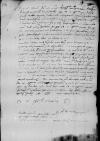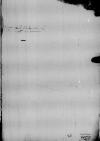Quod Dominatio Vestra Reverendissima me cf. Tiedemann GIESE to Ioannes DANTISCUS Löbau (Lubawa), 1538-07-09, CIDTC IDL 4762⌊litteriscf. Tiedemann GIESE to Ioannes DANTISCUS Löbau (Lubawa), 1538-07-09, CIDTC IDL 4762⌋ suis adeo amice redeuntem exceperit, gratiam habeo maximam. Gratissimum mihi vicissim est, quod intellexerim, Dominationem Vestram Reverendissimam feliciter bene valere.
1538-07-12⌊Heri1538-07-12⌋ ex Hohenstein (Olsztynek), town in Ducal Prussia, 26 km S of Allenstein (Olsztyn)⌊HohensteinHohenstein (Olsztynek), town in Ducal Prussia, 26 km S of Allenstein (Olsztyn)⌋ in compendio, quomodo res nostrae habeant, cf. Ioannes DANTISCUS to [Tiedemann GIESE] Hohenstein (Olsztynek), 1538-07-12, CIDTC IDL 1871⌊scripsicf. Ioannes DANTISCUS to [Tiedemann GIESE] Hohenstein (Olsztynek), 1538-07-12, CIDTC IDL 1871⌋. Dominatio Vestra Reverendissima securi bonique sit animi, osores non habituri sunt, quo gaudeant, sed quo paulopost vehementer doleant. Habitis bullis, quae expeditae diu in itinere esse nequeunt, nihil mutuo inter nos consilio omittemus, quo temporius Dominationis Vestrae Reverendissimae consecrationi sit consultum.
De me, quod coepit, indies sibi firmius persuadeat in amando Dominatione Vestra Reverendissima me cessurum nemini. In iis paulopost diffusius a me scribetur Dominationi Vestrae Reverendissimae. Quam diutissime optime valere cupio ex animo.
Venerabilis dominus hic probably Paweł Snopek (*after 1480 – †1554), close collaborator of Ioannes Dantiscus; Econom of the Dominium Ermland (Warmia); in 1524 mentioned as Canon of Guttstadt (Dobre Miasto) for the first time; 1528-1554 Provost of Guttstadt; 1536-1538 Canon of Ermland (in December 1538 he was forced to resign in favour of Alexander von Suchten; in 1543 he regained this prebend but two years later had to step aside for Kaspar Hannau) (KOPICZKO 2, p. 308; SBKKDM, p. 103; SBKW, p. 227; PSB 39/3, p. 405-406)⌊praepositusprobably Paweł Snopek (*after 1480 – †1554), close collaborator of Ioannes Dantiscus; Econom of the Dominium Ermland (Warmia); in 1524 mentioned as Canon of Guttstadt (Dobre Miasto) for the first time; 1528-1554 Provost of Guttstadt; 1536-1538 Canon of Ermland (in December 1538 he was forced to resign in favour of Alexander von Suchten; in 1543 he regained this prebend but two years later had to step aside for Kaspar Hannau) (KOPICZKO 2, p. 308; SBKKDM, p. 103; SBKW, p. 227; PSB 39/3, p. 405-406)⌋, communis amicus et frater noster, me Allenstein (Olsztyn), city on the Łyna river in southern Ermland (Warmia), Allenstein castle was the seat of the administrator of the Ermland Chapter estate⌊hicAllenstein (Olsztyn), city on the Łyna river in southern Ermland (Warmia), Allenstein castle was the seat of the administrator of the Ermland Chapter estate⌋ tractavit humanissime. Ad probably Paweł Snopek (*after 1480 – †1554), close collaborator of Ioannes Dantiscus; Econom of the Dominium Ermland (Warmia); in 1524 mentioned as Canon of Guttstadt (Dobre Miasto) for the first time; 1528-1554 Provost of Guttstadt; 1536-1538 Canon of Ermland (in December 1538 he was forced to resign in favour of Alexander von Suchten; in 1543 he regained this prebend but two years later had to step aside for Kaspar Hannau) (KOPICZKO 2, p. 308; SBKKDM, p. 103; SBKW, p. 227; PSB 39/3, p. 405-406)⌊quemprobably Paweł Snopek (*after 1480 – †1554), close collaborator of Ioannes Dantiscus; Econom of the Dominium Ermland (Warmia); in 1524 mentioned as Canon of Guttstadt (Dobre Miasto) for the first time; 1528-1554 Provost of Guttstadt; 1536-1538 Canon of Ermland (in December 1538 he was forced to resign in favour of Alexander von Suchten; in 1543 he regained this prebend but two years later had to step aside for Kaspar Hannau) (KOPICZKO 2, p. 308; SBKKDM, p. 103; SBKW, p. 227; PSB 39/3, p. 405-406)⌋ ob id potissimum diverti, ne graviore itinere me et equos, iam alioqui fessos, fatigarem impensius. Non paucos reliqui intereundum, paucos mecum integros reduxi.
De munere mihi donato velim mihi Dominatio Vestra Reverendissima numera written over ...⌈... illegible⌈...... illegible⌉aa written over ...⌉ret pretium, quod fratri meo Georg von Höfen (Georg Flachsbinder, Georgius de Curiis) (†after 1550-02-07), Ioannes Dantiscus' brother; Starosta of Rössel (HARTMANN 1525-1550, No. 584, 586, 588; AGAD, MK, 77, f. 385-386v)⌊GeorgioGeorg von Höfen (Georg Flachsbinder, Georgius de Curiis) (†after 1550-02-07), Ioannes Dantiscus' brother; Starosta of Rössel (HARTMANN 1525-1550, No. 584, 586, 588; AGAD, MK, 77, f. 385-386v)⌋ pollicita est. Sed haec ioco.
Dominationem Vestram Reverendissimam iterum felicissime valere precor et opto.


 BCz, 245, p. 42
BCz, 245, p. 42